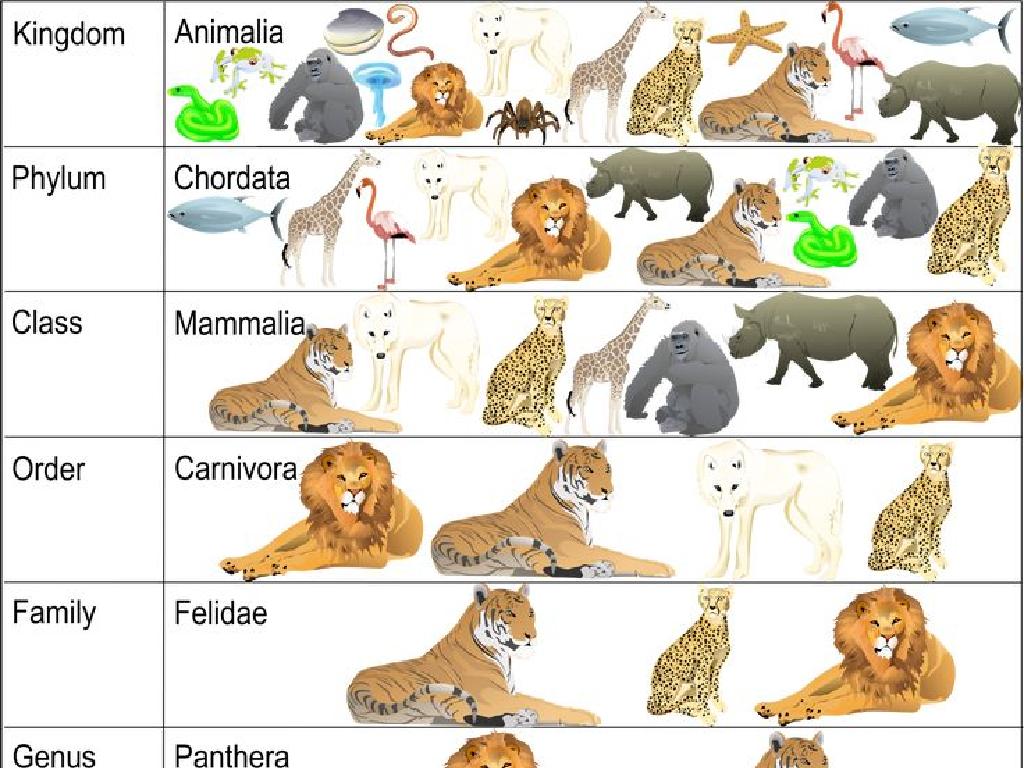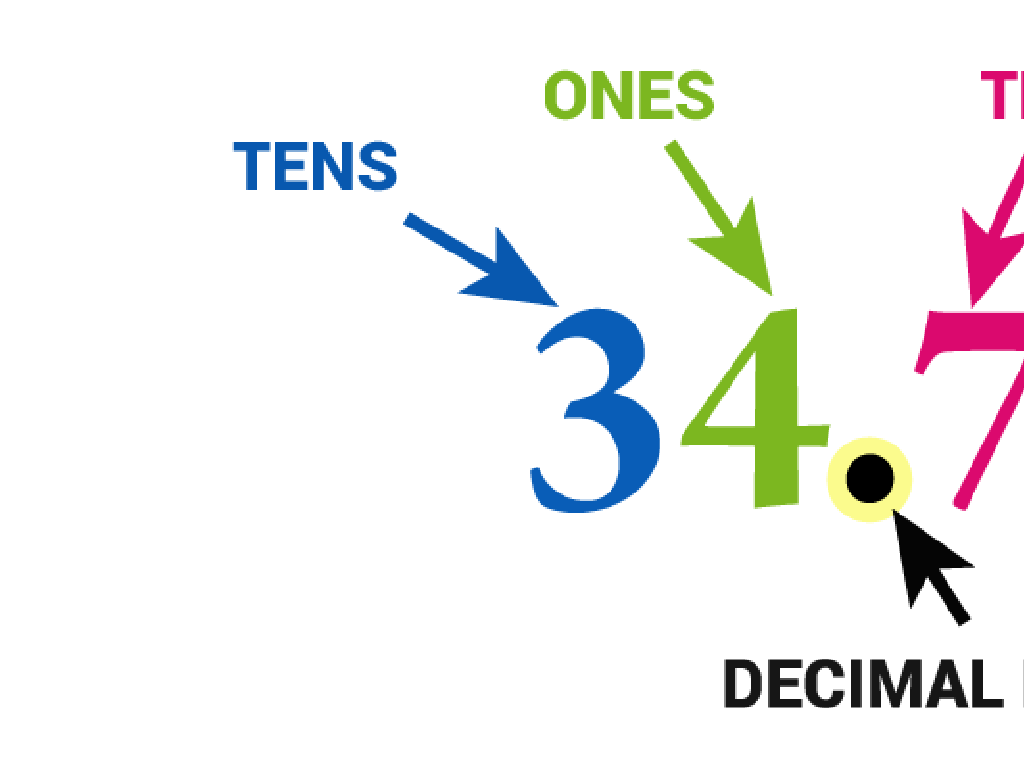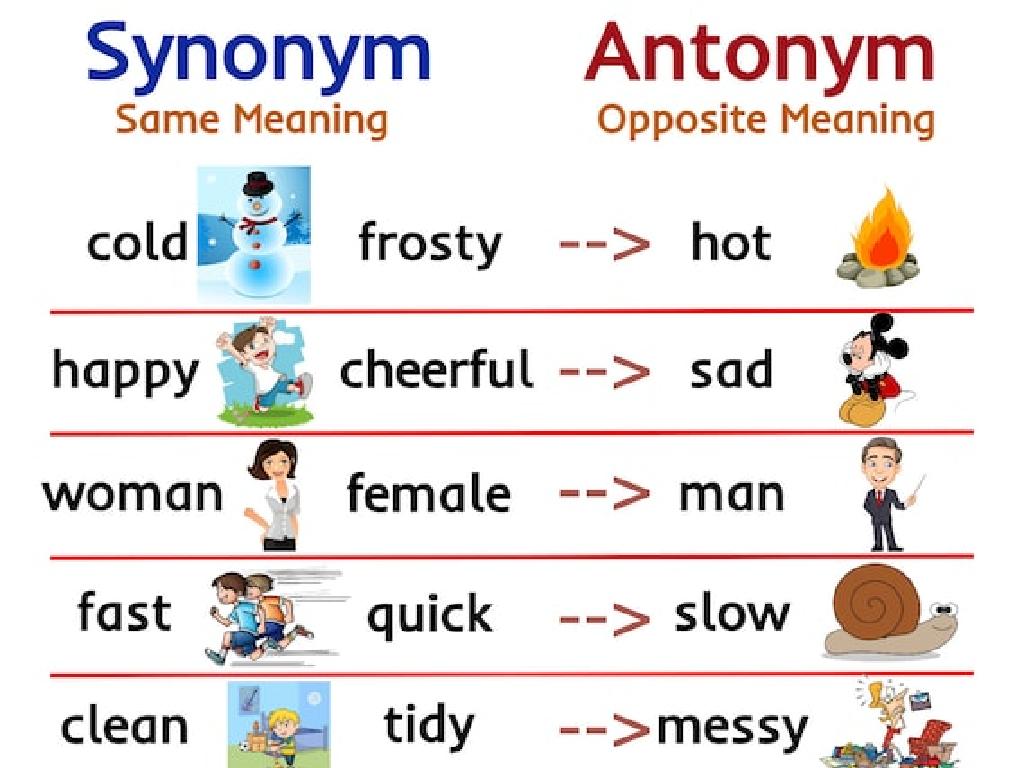Use Scientific Names To Classify Organisms
Subject: Science
Grade: Eighth grade
Topic: Classification And Scientific Names
Please LOG IN to download the presentation. Access is available to registered users only.
View More Content
Welcome to Biological Classification!
– Importance of scientific names
– Scientific names avoid confusion caused by common names and are universally recognized.
– Exploring life’s diversity
– Earth is home to millions of species, each with unique features.
– Biological classification explained
– It’s the system of categorizing organisms based on shared characteristics.
– Hierarchical organization
– Organisms are grouped from broad kingdoms to specific species.
|
This slide introduces the concept of biological classification, emphasizing the need for a universal system of naming organisms to avoid confusion. Scientific names, based on Latin or Greek, allow scientists worldwide to communicate clearly about species. Highlight the vast diversity of life on Earth and the necessity of organizing it into a manageable system. Explain that biological classification is a hierarchical structure, starting with broad groups called kingdoms and narrowing down to individual species. This system helps us understand evolutionary relationships and the history of life on Earth. Encourage students to think about the variety of life forms they know and how they might be related.
What’s in a Name?: Scientific Classification
– Defining scientific names
– Unique names for species based on Latin or Greek.
– Exploring binomial nomenclature
– Two-part system: genus name and species identifier.
– Examples: Homo sapiens, Canis lupus
– Human beings are Homo sapiens, wolves are Canis lupus.
– Significance of scientific names
– Allows accurate and universal identification of organisms.
|
This slide introduces the concept of scientific names and their importance in the classification of organisms. Scientific names, often derived from Latin or Greek, provide a unique and standardized label for each species, avoiding confusion that can arise from common names. The binomial nomenclature system, developed by Carl Linnaeus, consists of a genus name followed by a species identifier. Examples like Homo sapiens for humans and Canis lupus for wolves illustrate this system. Emphasize the global recognition and communication facilitated by scientific names in the scientific community. Encourage students to think of other organisms and try to find out their scientific names as a class activity.
The Father of Taxonomy: Carl Linnaeus
– Who was Carl Linnaeus?
– Swedish botanist who developed a method for classifying organisms.
– Linnaeus’ role in classification
– Linnaeus devised a hierarchical system to organize living things.
– The Linnaean classification system
– It categorizes species based on shared physical characteristics.
– Linnaean system’s modern use
– Today, it’s the foundation for naming species and understanding evolutionary relationships.
|
Carl Linnaeus, a Swedish botanist, laid the groundwork for modern taxonomy with his classification system. His binomial nomenclature is still used today to provide a universal language for scientists around the world. The system classifies organisms into a hierarchy, including kingdoms, classes, orders, families, genera, and species. This slide will introduce students to Linnaeus’ contribution to science and how his system is applied in current biological classification. Encourage students to think about the importance of a standardized classification system in science for communication and research purposes.
Hierarchy of Life: Taxonomic Classification
– Explore taxonomic ranks
– Domain, Kingdom, Phylum, Class, Order, Family, Genus, Species
– Grasp classification levels
– Each level narrows down into more specific groups
– Organism examples per rank
– Domain: Archaea; Kingdom: Animalia; Species: Homo sapiens
– Significance of scientific names
|
This slide introduces students to the hierarchical structure used to classify all life forms. Starting with the broadest category, the Domain, and narrowing down to the most specific, the Species, students will learn how each taxonomic rank organizes organisms based on shared characteristics. Provide examples for each rank to help students visualize the concept. Emphasize the importance of scientific names in providing a universal language for scientists around the world to communicate clearly about organisms without confusion. Encourage students to think of other examples and consider how this system reflects evolutionary relationships.
Classifying Organisms: Exploring Diversity
– Criteria for organism classification
– Classification based on structure, genetics, and behavior
– Characteristics: Morphological, Genetic, Behavioral
– Morphology: form and structure, Genetics: DNA, Behavior: actions or reactions
– Case study: Classifying a new species
– Steps to identify and classify a newly discovered organism
– Significance of scientific names
– Scientific names provide a universal way to identify species
|
This slide introduces the complex process of classifying organisms, which is fundamental in understanding biological diversity. Classification is based on various criteria, including morphological (physical structure), genetic (DNA), and behavioral characteristics. A case study of classifying a new species will help students understand the practical application of these criteria. Emphasize the importance of scientific names in providing a unique and universal identifier for each species, which is crucial for clear communication in the scientific community. Encourage students to think about how different species they know might be classified and the importance of each characteristic in this process.
Scientific Names in Action
– Superiority of scientific names
– Avoids confusion unlike common names which can vary regionally
– Scientific names in research
– Essential for accurate communication in scientific community
– Conservation and scientific names
– Helps in tracking species for conservation efforts
– Practice matching names
– Match common names to scientific names for a set of organisms
|
This slide emphasizes the importance of using scientific names over common names to avoid confusion, as common names can vary widely across different languages and regions. Scientific names provide a universal standard that is crucial for clear communication among scientists, especially in research. Additionally, these names play a significant role in conservation biology by allowing for precise identification and tracking of species, which is essential for protecting biodiversity. The practice activity will help students apply their understanding by matching common names of organisms to their respective scientific names, reinforcing the concept of binomial nomenclature.
Let’s Practice Classification!
– Classify objects in the classroom
– Use binomial nomenclature
– Name objects with a two-part scientific name
– Share and discuss findings
– Understand classification systems
– Learn how scientists categorize living organisms
|
This activity is designed to help students apply the concept of classification to everyday objects as a practice for understanding how scientists classify living organisms. Students should group classroom objects based on similarities and differences, then assign each group a ‘scientific’ name using binomial nomenclature (a two-part name). Afterward, students will share their classifications with the class to discuss the rationale behind their system. This exercise will reinforce the importance of a standardized naming system and how it can be applied to organize diverse items. Possible activities: 1) Classify writing instruments by color and type, 2) Name different types of seating arrangements, 3) Organize books by genre and size, 4) Classify plants in the room by leaf shape and size.
Class Activity: Create Your Own Species
– Invent a new organism
– Assign a scientific name
– Follow binomial nomenclature: Genus species
– Classify your organism
– Determine kingdom, phylum, class, order, family, genus, species
– Prepare a class presentation
|
This activity encourages students to apply their knowledge of scientific classification by creating an imaginary organism. They should use creativity to invent unique features and habitats for their species. Students must then assign a scientific name using the binomial nomenclature system, which consists of a genus name followed by a species name, both italicized and the genus capitalized. They will classify their organism by placing it into the appropriate categories of kingdom, phylum, class, order, family, genus, and species. Finally, students will prepare a short presentation to introduce their organism to the class, explaining its characteristics and classification. This will help them understand the practical application of taxonomy and enhance their public speaking skills. Possible activities include drawing the organism, creating a habitat diorama, or writing a description of its life cycle.
Conclusion: Scientific Names & Biodiversity
– Recap on scientific naming
– Importance of classification
Classification helps organize living things into groups for easier study.
– Biodiversity understanding
Knowing scientific names enhances our grasp of the planet’s rich life forms.
– Homework assignment
Research the scientific name and classification of a chosen organism.
|
As we wrap up, let’s review the importance of scientific names in classifying organisms, which provides a universal language for scientists around the world. Understanding this system is crucial for studying biodiversity and appreciating the vast array of life on Earth. For homework, students are tasked with selecting an organism, researching its scientific name, and determining its classification. This will reinforce their learning and encourage independent exploration of the natural world. In our next class, we’ll discuss their findings and how this system helps us make sense of the complex web of life.





